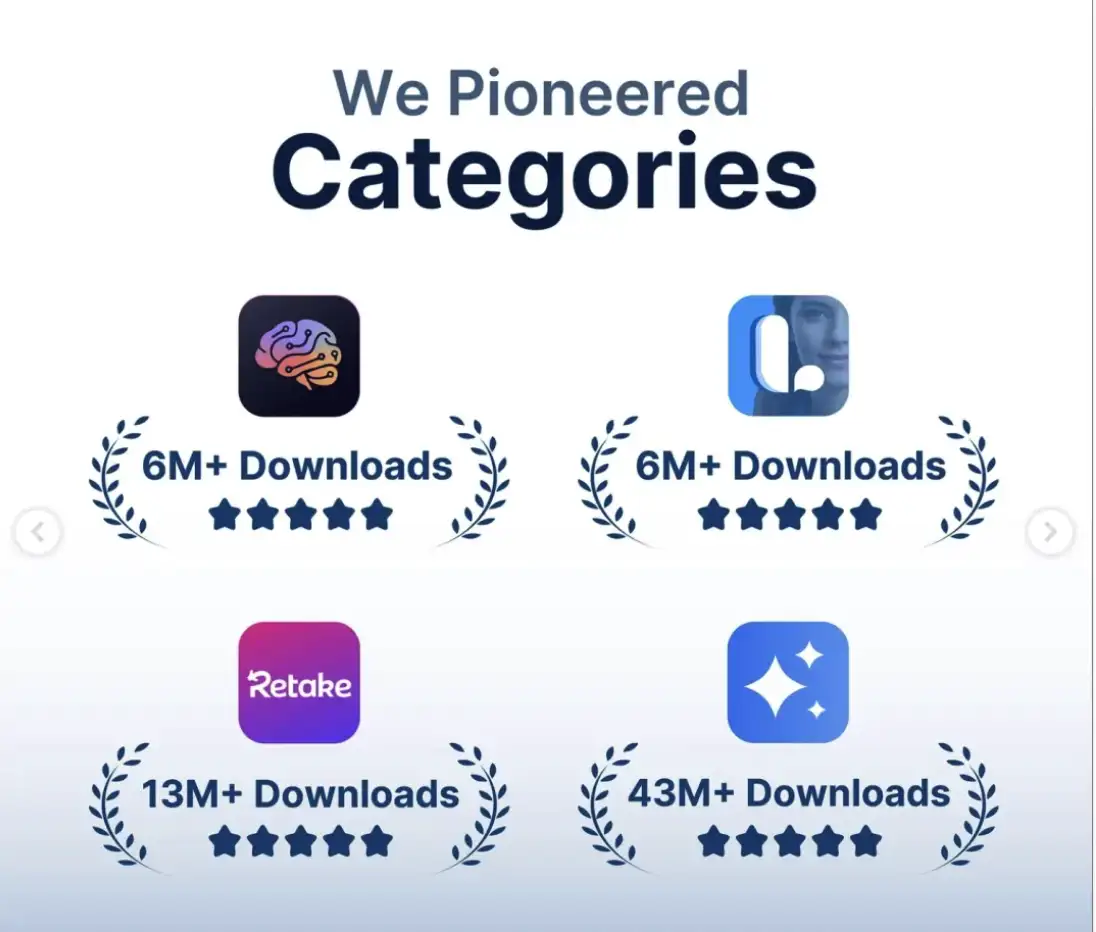Codeway: Turkey’s Factory of Viral AI Apps

Vivi Carter · 7, August 2025
What Is Codeway?
Codeway is an Istanbul-based mobile software company that has been quietly making global waves. Founded in 2020, Codeway has released over 60 apps—accumulating more than 300 million downloads worldwide (source: Codeway). While many celebrated AI startups in the US or China focus on one or two “flagship” products or tout star-studded founding teams, Codeway is built on scrappiness and speed, not pedigree.
Early on, Codeway entered the scene with utility apps—most notably Clean Up, a phone-cleaner tool that essentially bankrolled its early explorations. Despite launching dozens of products spanning social, gaming, and practical verticals, most flopped—until persistent iteration paid off.

The Turning Point: Catching the AI Wave Early
Unlike “deep tech” labs, Codeway thrived by identifying and replicating viral product mechanics. By late 2021, before the wider AI boom, Codeway launched FaceDance—an AI face-swap app that animates photo characters to dance to music. The app exploded on TikTok, notching over 181 million tag views (source: TikTok). Suddenly, Codeway had a new blueprint: light, viral, AI-powered apps that invite creative sharing.
Building on FaceDance’s momentum, Codeway quickly capitalized on emerging trends:
- Wonder:
Their entry into AI art, enabling users to generate artworks via text prompts, landed in the top 10 app charts across 37 countries.
- Chat With Ask AI: With the ChatGPT boom, Codeway launched their take, leaping into the US iOS top 3.
- Learna: An AI-powered language app released in fall 2024, which hit 4 million downloads in two months, especially popular among users in India and Pakistan.
VCs began to notice; Andreessen Horowitz’s global AI app ranking (a16z) featured three Codeway apps in their “Top 50”.
A Matrix of Global AI Consumer Apps
What distinguishes Codeway isn’t technical depth or industry-first developments. Rather, it’s their ability to pinpoint consumer needs and deliver AI-powered experiences that stick. The portfolio breaks down as follows:
Entertainment-Focused Apps: Designed for Virality
- FaceDance: The formula is simple yet addictive—users upload a photo, the app creates a goofy dance animation, and sharing on platforms like TikTok goes viral. FaceDance reportedly reached $1.29 million in one month in early 2023 (source: SensorTower).

- Wonder: Users supply keywords and select an art style; Wonder generates unique visuals. While not technically ahead of other AI-art generators, its onboarding and user experience have kept it consistently ranked in app stores.
Utility AI Tools: Satisfying Everyday Needs
- Chat With Ask AI: Not innovative in its core tech, it’s differentiated by removing friction—a rich prompt library, smooth onboarding, and clear value prop. It hit a reported $2.4 million in peak monthly revenue.
- PhotoApp: Bundling image enhancement, background removal, and more, PhotoApp targets widespread pain points with accessible AI features.
Educational AI: A New Growth Engine
- Learna: Launched September 2024, focusing on English language acquisition through AI tutors. It quickly surpassed 4 million downloads, dominating education charts in 80+ countries (source: App Annie). Targeted ads with South Asian AI “teachers” resonated with immigrant audiences, driving highly efficient user acquisition in India and beyond.
Ingredients of Codeway’s Success: Growth and Monetization Tactics
Some might dismiss Codeway as just another “shell company” producing quick-clone apps. But the “app factory” model itself is a strategic choice—matching algorithmic recommendation feeds with high-velocity product deployment.
Data-Driven Growth and Global Targeting
- Hyper-Efficient Ad Spend: Instead of saturating audiences, Codeway runs precise, conversion-driven campaigns. FaceDance and Wonder achieve above-average conversion despite lower ad impressions (source: Singular).
- Localized Creative: Learna’s ads, for instance, feature South Asian AI tutors and simple English, striking a chord with first-time learners. Smart localization slashes acquisition costs.
Regional Monetization Strategies
- High-ARPU Market Focus: In the US and Canada—home to users more willing to pay—apps like FaceDance and Ask AI lean heavily on subscription models, with US users contributing over 50% of FaceDance’s revenue.
- Emerging Market Optimization: In markets like India, where large audiences offset lower ARPU, Codeway leverages government educational policies and a young demographic to scale explosively.
Monetization Models: Blending Ads, Subscriptions, and Microtransactions
- Mixed Monetization: Most Codeway apps combine ads with in-app purchases, but tailored to the app type.
- Entertainment (e.g., FaceDance): A blend of soft subscriptions ($2.99/week) and ad-supported free content reduces friction, catering to impulse spenders without shutting out free users.
- Utility (e.g., Chat With Ask AI, PhotoApp): Limited free usage nudges users towards subscriptions; ads are used as soft paywalls, striking a balance between necessity and annoyance.
- Weekly Subscription Focus: Instead of monthly, Codeway pushes weekly or one-off “lifetime” subs, with weekly plans forming over 80% of in-app revenue—capitalizing on users’ low resistance to small, recurring payments.
- Behavioral Design: Free trials come with “now, pay nothing” toggles and countdown timers to fuel urgency. High-priced weekly subs sit next to discounted “lifetime” deals for stark price anchoring.
- User Experience Balance: While their designs have been criticized for aggressive monetization, the logic is user-centered—less interruption for entertainment apps, more persistent upsell for tools.
Conclusion: Fast, Scrappy, and Global—A Different Kind of AI Innovator
Codeway’s balance of speed, opportunism, and relentless iteration has built one of the world’s most prolific AI app factories. With $57+ million in in-app revenue (as of 2024) and over $4 million peak monthly run-rate (source: Data.ai), it’s clear that, in the AI era, success doesn’t always require world-first inventions.
Sometimes, the winners are those who understand user psychology, market quickly, and adapt faster than everyone else.
